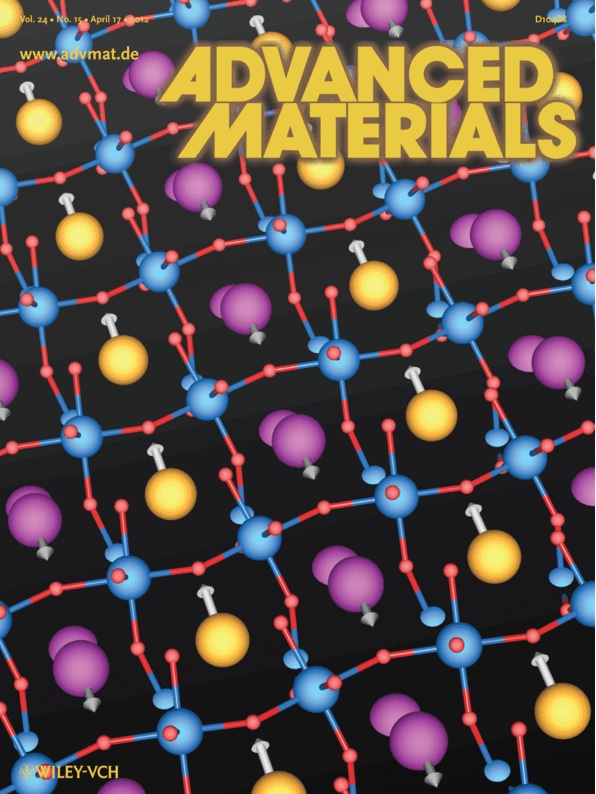 Dr. James Rondinelli
Dr. James RondinelliMaterials assistant professor James Rondinelli, has developed a method of constructing new electrically switchable materials through a form of atomic alchemy that resembles microscopic sandwich making. The resultant material could find use in a variety of applications including video game consoles, transit passes, and medical imaging technology.
Rondinelli, in collaboration with Dr. Craig Fennie, an assistant professor of applied engineering at Cornell University, has designed this new class of ferroelectric materials by making nanoscale composites of two chemically different oxides. These atomic scale "club sandwiches" are formed by combining two compounds, neither of which initially display ferroelectric behavior, and combining them to produce a new hybrid material that shows that property. The results of their work, "Ferroelectricity: Octahedral Rotation-Induced Ferroelectricity in Cation Ordered Perovskites," appear along with an inside cover image in the April 17, 2012 (Vol. 24, Issue 15) issue of Advanced Materials.
 Ferroelectric oxides do the twist. In Advanced Materials, Rondinelli with collaborator C. Fennie (Cornell University) explain how to engineer polar displacements, indicated by the gray arrows in the image, from rotations, a “twisting-like” distortion of the corner-connected oxygen octahedra common to perovskite oxides. The first-principles calculations reveal that layered A-site ordering, seen by the alternating gold and magenta spheres forming an atomic-scale superlattice, allows the octahedral rotations to induce ferroelectricity; simple guidelines are enumerated to realize these materials, creating a new route to ferroelectrics by design. James M. Rondinelli and Craig J. Fennie: Ferroelectricity: Octahedral Rotation-Induced Ferroelectricity in Cation Ordered Perovskites. Advanced Materials. 2012. Vol. 24. Pages 1961-1968. Copyright Wiley-VCH Verlag GmbH & Co. KGaA. Reproduced with permission.
Ferroelectric oxides do the twist. In Advanced Materials, Rondinelli with collaborator C. Fennie (Cornell University) explain how to engineer polar displacements, indicated by the gray arrows in the image, from rotations, a “twisting-like” distortion of the corner-connected oxygen octahedra common to perovskite oxides. The first-principles calculations reveal that layered A-site ordering, seen by the alternating gold and magenta spheres forming an atomic-scale superlattice, allows the octahedral rotations to induce ferroelectricity; simple guidelines are enumerated to realize these materials, creating a new route to ferroelectrics by design. James M. Rondinelli and Craig J. Fennie: Ferroelectricity: Octahedral Rotation-Induced Ferroelectricity in Cation Ordered Perovskites. Advanced Materials. 2012. Vol. 24. Pages 1961-1968. Copyright Wiley-VCH Verlag GmbH & Co. KGaA. Reproduced with permission."Take two compounds, mix them together and arrange the atomic layering of the structure in an ordered fashion," Rondinelli said. "In this way we can create artificial materials - new compounds - that display an emergent property that neither of them possessed originally."
This particular ferroelectric research is being implemented in a wide array of memory technologies, where data bits are stored in the switchable electric dipoles that distinguish ferroelectric materials from other material families, including video game consoles. Similar materials have already been integrated into the radio-frequency identification tags on transit passes and they are used in ultrasoundmedical imaging technologies.
Rondinelli's design guidelines offer the experimental and industrial scientific communities a step-by-step prescription to create these compounds, resulting in new materials.
"The idea is that we have relatively inexpensive computational tools which are powerful enough to guide the synthesis of new materials. In essence, we have significantly cut the time that it would take to make these materials discoveries using traditional experimental approaches."
Rondinelli's research was supported by the U.S. Department of Energy, Basic Energy Sciences, and Drexel University's Office of the Provost.